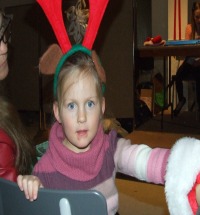- Our School
- Parents
- Academics
- Programs & Services
- School Life
- Class Websites
Contact
Head Lice
Head lice are tiny bugs that live on the scalp of humans. They do not have wings so they cannot fly or jump. Head lice are not found on cats, dogs or other household pets. The bites from head lice cause itching and scratching. Live eggs, called nits, range in colour from off-white to dark brown, and are about half the size of a pin head. Nits stick to the hair and do not fall off if touched. After nits hatch, the shells are white. These empty shells stay on the hair as the hair grows.
Head lice are not a reflection of being unclean. Head lice are a recurring problem which can affect anyone in direct contact. Children are especially prone to these pests as they often play close together where heads may come in close contact. Once lice are present in a classroom or school, it can be difficult to manage without a careful screening process. Parents play an important role in controlling head lice.
If your child has lice:
- Don't panic! Lice like clean heads and you can learn how to treat it.
- Tell the school (and any other group your child attends) immediately if head lice is found. All of his/her classmates and friends will also need to be checked. Everyone in your house with lice will need to be treated at the same time.
- Remind your child not to share hats, toques, combs or hair items.
- Contact the school for an information package to assist in the treatment of head lice.
Checking for Head Lice
- Check young children once weekly for head lice.
- Have your child sit under a bright light and use a magnifying glass if possible. Let him/her watch television, a video program or read to keep busy.
- Comb the hair to get rid of tangles.
- Hold a small lock of hair and comb the other hair out of the way. Pin long hair away from the piece you are working with.
- Look for nits (eggs) that are small and greyish or white. They look similar to dandruff, but can't be flicked off.
- Slide each egg off the hair using your thumbnail and fingernail.
- After taking all the eggs off a lock of hair, move to the next section.
- Put the eggs in a bag to throw away when you are done.
- Pin back long hair or make small ponytails to keep the clean hair away from the hair you have not done yet.
- Keep sliding eggs off until you remove all the eggs.
- Spread the hair with a comb and look at the scalp. Lice crawl very fast, but they do not fly or jump. Look for eggs on the hair close to the scalp, on the hair behind the ears or where the hair meets the neck.
- Look for open sores and scabs on the head.
- Check all the people that live in your house.
- Treat the head lice (see below) and then check for new lice.
Treatment
- Wash your child's hair using a head lice product such as Nix and R&C shampoo. Homemade remedies are not recommended as there is no evidence that they work.
- Talk to a healthcare professional about the best product to use.
- Read all instructions carefully and follow them step by step so that the product will work.
- Some products say that only one treatment is needed, but a second treatment done seven to 10 days later will kill any newly hatched lice.
- Do not use conditioners, gels, hair spray, oils or mousse for the duration of the treatment. Use only plain shampoo.
Check for Lice Weekly
- Check your child's hair two times a week for four weeks to make sure all the eggs are gone.
- Clean hair combs, hair brushes, pillow cases and towels in hot water. Dry pillow cases and towels on high heat in a dryer.



Follow Us: